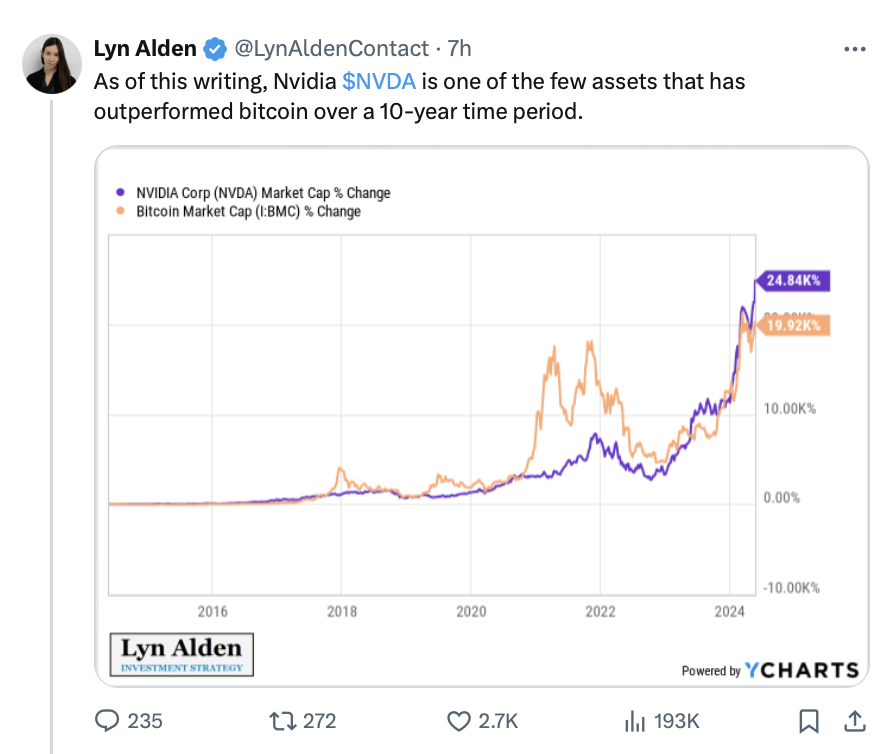Technology company Nvidia (NVDA) performed better than Bitcoin (BTC) in the past decade, but cryptocurrency analysts argue that this trend is unlikely to continue in the next decade. Swan Bitcoin CEO Cory Klippsten suggests that the likelihood of Nvidia outperforming Bitcoin in the next decade is “almost zero.” This view, despite acknowledging Nvidia’s impressive past performance, is also expressed by investment strategist Lyn Alden, who prefers Bitcoin for the next decade.
Nvidia’s Historical Performance
Data from Statmuse reveals that between May 23, 2014, and May 23, 2024, Nvidia’s return was an astonishing 21,558%, significantly higher than Bitcoin’s 13,048% return.

Nvidia’s success is largely attributed to its production of chips necessary for training and deploying artificial intelligence (AI) models. Despite this, in the three months since the approval of spot Bitcoin exchange-traded funds (ETFs) on January 10, Bitcoin has slightly outperformed Nvidia with a 31.7% return compared to Nvidia’s 30.2%.
Kobeissi Letter highlights that a $10,000 investment in Nvidia shares in 1999 would be worth $25.3 million today, emphasizing Nvidia’s long-term growth potential. Daniel Sempere Pico questioned whether Nvidia would have been seen as a riskier investment in 2014, considering that both Bitcoin and AI were less widespread at the time. Pico noted that while AI’s potential was unclear in 2014, some foresaw Bitcoin’s potential.
Past Risks and Rewards
Pico’s thoughts highlight interesting points about the perceived risks of investing in Nvidia and Bitcoin a decade ago. In retrospect, both investments carried significant risks but also offered substantial returns. The unpredictability of AI’s growth contrasted with Bitcoin’s more predictable yet volatile nature, pointing to different factors affecting their performance.
Known as “Sina” on X, the co-founder of 21st.capital, argued that financial assets like Bitcoin generally exhibit broader network effects compared to AI. Sina emphasized that money has multiple layers of network effects, making it more likely to achieve widespread adoption and impact compared to AI, which lacks such network effects. This perspective suggests that Bitcoin’s growth and adoption potential could be more robust in the long term.
Looking ahead, while there are cautionary notes about potential corrections, there are optimistic forecasts for Bitcoin’s performance over the next two years. Former physics professor Giovanni Santostasi used the “Power Law” model to predict that Bitcoin could peak at $210,000 in January 2026, followed by a potential drop to $60,000.

 Türkçe
Türkçe Español
Español









